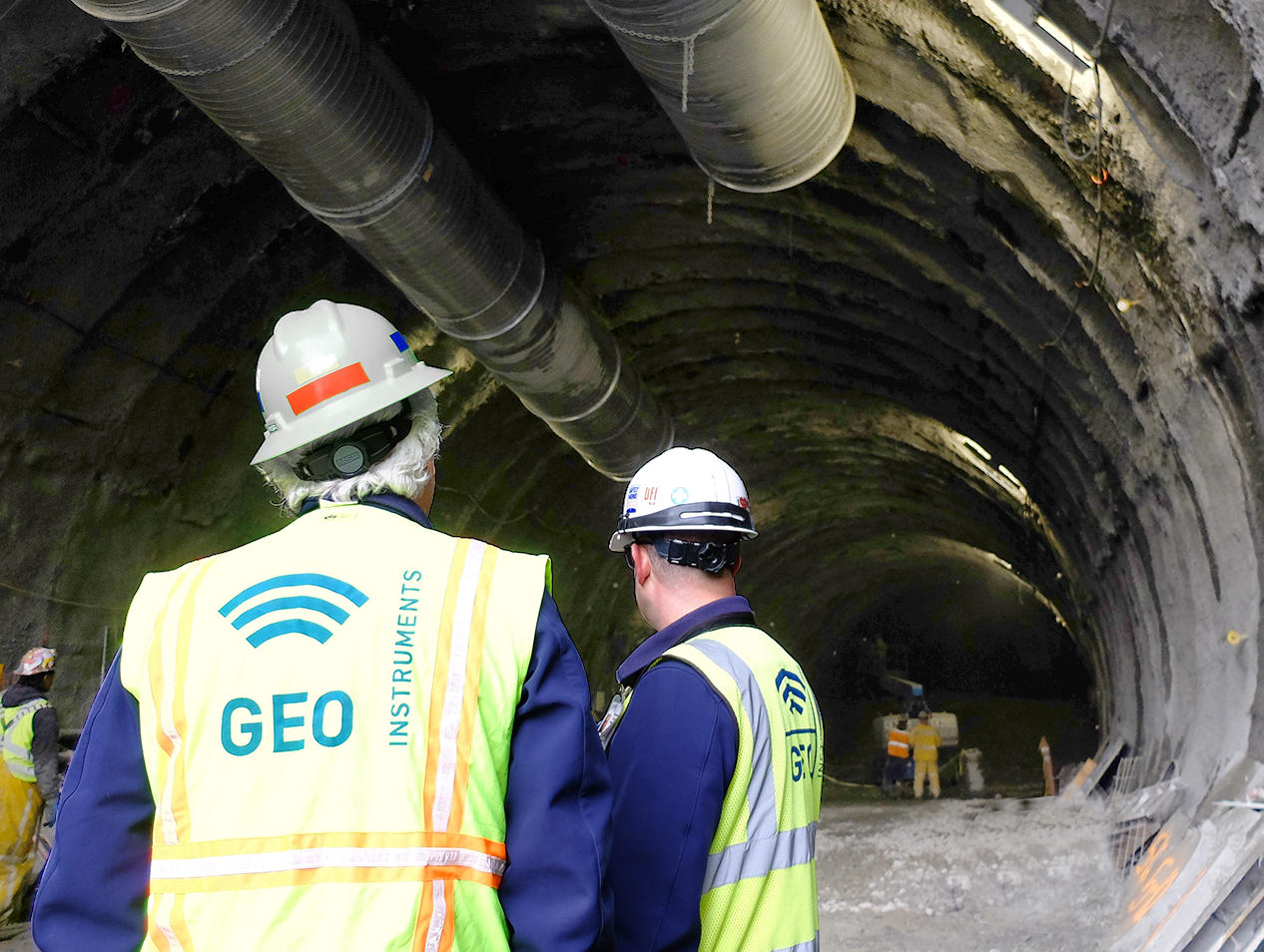GEO-Instruments monitors underground service tunnels, tube lines, railway and road tunnels, decommissioned or in-use.

While tunnelling can require direct internal monitoring, adjacent assets may also need to be monitored, such as existing tunnels and surface infrastructure.
Monitoring activities during tunnelling.
Ground movement caused by tunnelling is not always predictable and might require a quick response to compensate settlement. This can be done through compensation grouting or prior ground improvement. All corrective measures also need to be quantified, so that they can be adjusted to match the tunnelling induced ground movement.
Other times, tunnelling monitoring is occurring to confirm there is no movement occurring and guarantee the safe use of surface infrastructures and roads.
While the construction activity in tunnelling activities is often moving across site, monitoring also needs to occur before and after the establishment of the underground tunnel, to watch over residual ground movement.
Underground works
GEO-Instruments has a considerable amount of experience in dealing with different underground facilities, all having specific requirements whether they are in-use Victorian-era sewers, decommissioned transport tunnels or live underground lines. Tunnel monitoring usually involves night working with teams of confined space trained workers, and well established method statements to manage the usually time and space constrained working conditions.
Implementation of cutting edge technologies
Tunnelling and underground monitoring works bring a risk of loosing connection between instruments and the web monitoring platforms. GEO-Instruments is using innovative wireless technologies to minimise cable runs, while implementing redundancy communication systems to provide a continuous data flow from the site.